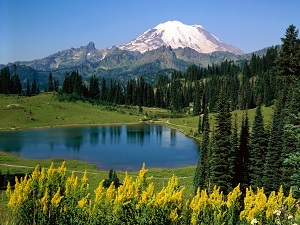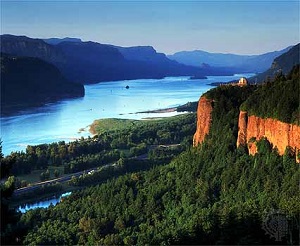Nature in Tri-Cities Washington
Tri-Cities, Washington stands in stark contrast to the areas surrounding it. In a land of snow-capped mountains, glacial valleys, and lush, verdant forests, the Tri-Cities region comprised of Pasco, Kennewick, and Richland stands out with its flat savanna-like plains, and dry, temperate climate. The Tri-Cities Washington region is a Naturalist's Paradise.
 The State of Washington is known for its majestic, snowy mountains and volcanoes such as Mount St. Helens along the central-eastern region of the state. Washington State also has very cold winters because of its northern location, bordering the Canadian territory. The western side of Washington State overlooks the Pacific Ocean and is home to some of the country’s major ports.
The State of Washington is known for its majestic, snowy mountains and volcanoes such as Mount St. Helens along the central-eastern region of the state. Washington State also has very cold winters because of its northern location, bordering the Canadian territory. The western side of Washington State overlooks the Pacific Ocean and is home to some of the country’s major ports.
The Land
Among the glaring white of snow, and the fresh green spruce and fir trees, lie flat, dry plains. The region boasts of a unique landscape that is reminiscent of the African savannas, with vast plains called the shrub-steppes.
The shrub-steppes are characterized by dry, treeless flatlands. The absence of trees and the flatness of the place create desert-like weather that is highly uncharacteristic for such a northerly located place. The name shrub-steppes is derived from the only vegetation that grows in this type of place, the shrubs or bushes as others call them.
While the shrub-steppes are fast increasing in size all across the country, the people of Pasco, Kennewick, and Richland can take pride in the fact that the shrub-steppes is one of the last remaining of its kind, with the area declared as protected land. The protected land also provides a safe haven to the Malleefowl, a large, terrestrial bird that looks very similar to pheasants, and other ground-dwelling game birds.
It is in the shrub steppes that the Lewis and Clark expedition set camp and stayed some two hundred years ago as they set out to explore and map the heart of the United States, and you can experience what it was like during those times by visiting the Lewis and Clark State Park and camping there.
While Tri-Cities protects its natural heritage, it also provides adequate housing facilities for its residents. Tri-Cities takes full advantage of its unique, natural surroundings by designing tasteful homes that complement the stark beauty of the shrub steppes.
 The Life
The Life
Located in the confluence of three rivers, Pasco, Kennewick, and Richland host a healthy population of birds and other wildlife. In fact, the Tri-Cities has some of the highest sightings of migratory birds, like the American Robin and the Willow Goldfinch. In fact, almost any home or real estate property in the area can host these birds at any given time.
The mild weather of Pasco, Kennewick, and Richland is also suitable for other flora and fauna, and to the cultivation of crops. In fact, Tri-Cities has been an agricultural region for the longest time.
Truly the area of Pasco, Kennewick, and Richland is a haven for humans and wildlife alike. Compared to its heavily industrialized neighbors in Washington State, the Tri-Cities is relatively low in pollution and has a healthier population of plants and wildlife. Among the wildlife to watch out for is the American Robin.
Land and Life
Indeed there is so much to see and experience in Tri-Cities. The largely untainted lands of Pasco, Richland, and Kennewick offer visitors and potential residents the chance to commune with nature without having to give up the conveniences of modern life.
Truly it is possible that modern man can live alongside nature’s grandeur, with each benefiting from the existence of the other. As it is possible in the Tri-Cities, may it be possible in other places as well.
